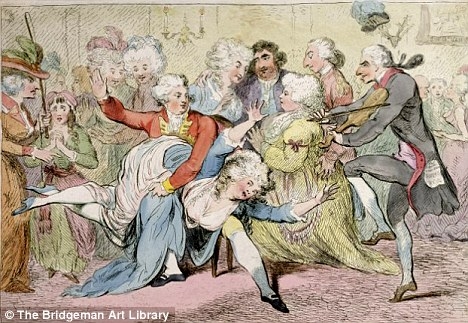Living in England in the 18th century was vastly different to the 19th century.
To try to gain a perspective of the England that our ancestor s were born into, the following stories from the internet make very interesting reading.
Eighteenth century London evokes images of fine Georgian buildings, many of which are still standing, and fine art.
But in reality, it more of was a modern day Sodom, the biblical city synonymous with sexual depravity, and from which English gets the word "sodomy" (to North Americans, the eighteenth century is ancient history, but to the British it is relatively recent). It was a city of depravity and vileness (as for it high crime and murder rate, and the brutal methods of punishment, that s another story).
It is thought that there were almost 63,000 prostitutes in London in the 1700s and that a staggering one in five of London s women were "harlots." In fact, London s prostitutes generated an estimated gross turnover of around £20 million (£1.5 billion in today s money). This was big business.
Famous prostitutes became the celebrities of their time in Britain, including Lady Hamilton, the mistress of Lord Nelson. The fictional Moll Flanders is reputedly based on the real life Moll King. One of her customers was the author of Moll Flanders, Daniel defoe.
The 18th Century British artist William Hogarth, who painted scenes of London that were as accurate as he could get them
(18th Century London is often referred to as Hogarthian London), immortalised London s prostitution industry in
A Rake s Progress (1732-33). Grotesquely (though, remember, only to the eyes of someone in the 21st Century) child
prostitutes also plied their trade in London, some as young as eight. The British even believed that sexual intercourse
with a child cured veneral diseases.
And, of course, veneral diseases were rife, such as syphilis and gonorrhea.
Zoe Brennan takes a closer look.
Sin city: Georgian London evokes images of elegance and fine art... in truth one in five women were prostitutes
By Zoe Brennan
10th October 2009
Daily Mail
The scene at the bawdy house was one of lust and depravity. Lying on a large reflective pewter platter held
aloft above the rowdy drinkers was a beautiful
young girl, fresh from the country.
Casting her clothes aside, she assumed her role as a posture moll , striking a series of explicit sexual poses before the braying, dissolute crowd.
Eventually, she stood absolutely naked, all modesty cast aside, as the punters bid for her deflowering rights in a Hogarthian
scene of innocence corrupted.
A colourful view of London, immortalised by Hogarth in A Rake s Progress(1732-33)
For although Georgian London evokes images of elegant buildings and fine art, it was, in fact, the Sodom of the modern age and scenes like this were commonplace. Teeming with prostitutes - from lowly street walkers offering a threepenny upright to high-class courtesans retained by dukes - Georgian London was a city built on the sex trade.
In his new book, The Secret History Of Georgian London: How The Wages Of Sin Shaped The Capital, acclaimed historianDan Cruickshank describes how prostitution influenced the building of London; from the smart new streets of Marylebone to the squalid alleyways around Charing Cross.
Extraordinarily, he believes that there were up to 62,500 harlots working in the capital during the 1700s - more than anywhere in Europe, and totalling a staggering one in five of the female population. They were attended by prosperous pimps and generated an estimated gross turnover of around £20 million (£1.5 billion in today s money).
Cruickshank describes Georgian London as a vast, hostile, soulless, wicked all-devouring but also fatally attractive place that makes and breaks, that tempts, inflames, satisfies, yet corrupts and ultimately kills .
One visitor at the time wrote: Certain it is that no place in the world can be compared with London for wantonness .
Famous prostitutes, such as Lord Nelson s mistress Emma Hamilton, became the celebrities of their time, and men of every rank frequented popular bathhouses, or bagnios.
Tragically, children were also victims of this trade - prematurely brutalised child prostitutes, some as young as eight, thronged the city's main thoroughfares. Venereal diseases were rife, and many died an agonising death, ravaged by syphilis or gonorrhea.
So just how did this come about? Cruickshank believes simple economics hold the key. A common prostitute in the 18th century could expect to receive two guineas, or pounds, per assignation; earning more than £400 a year.
In contrast, a housemaid, the alternative form of work for young women, earned only £5 a year for a life of drudgery.
And for the thousands of girls who flocked to London each year eager to earn their fortunes, so were there those eager to exploit them. They were bawds or pimps women who had grown too old to make a living in prostitution and so preyed on innocents, waiting eagerly for the rural coaches to arrive. They made huge profits, perhaps £150 (£11,000 today) for selling deflowering rights for a young virgin to a nobleman.
One account describes a bawd, or vile procuress at work. Each morning she took her rounds to all the inns, to see what youth and beauty the country had sent to London. And when she found a rural pretty lass step out of a wagon, the antiquated She-captain of Satan s regiment would offer the poor innocent creature accommodation in her house gratis, till she saw if she should like the town.
Bawds used lies and tricks to entice the naive country girls, offering them what they thought would be respectable work and friendship, and then employing threats and violence to ensnare them. One contemporary author describes how fallen angels were then trapped by false debt, told they owed money for lodgings or food.
Then, at a nod, must that tender delicate person be given up to the lust of every ruffian who can afford the price, to be touzed, and rumpled, like a bit of dirty paper. Once in a bawdy house, she would be torn to pieces, in the flower of her age .
The bawd, Mother Needham, was stoned to death in 1731 for running a house of ill-repute ("Moll Hackabout has arrived at the Bell Inn in Cheapside, fresh from the countryside, seeking employment as a seamstress or domestic servant. She stands, innocent and modestly attired, in front of Mother Needham, the brothel keeper, who is examining her youth & beauty." William Hogarth, Plate 1 of 6, April 1733)
Bawds were loathed by the public, who referred to them as Hags of Hell . Indeed, the most famous bawd, Mother Needham, was pinioned in the stocks in April 1731 for running a house of ill-repute, and stoned to death by an angry mob.
A series of engravings by contemporary artist William Hogarth depicts a simple country maiden being duped by a bawd.
At first, the girl, named Moll Hackabout , enjoyed lavish gifts and riches from a benefactor at her dwellings in Covent Garden's Drury Lane. But as she sinks into the vice world, she becomes depraved and diseased, eventually dying lonely and unloved of syphilis.
This horrible condition, known to the Georgians as the great pox , was untreatable and destroyed the facial features with suppurating ulcers, leading eventually to blindness, insanity and excruciating death. The moral decline shown by Hogarth was, says Cruickshank, the fate of untold thousands of young women in this period.
London prostitutes were divided into different classes. Bottom of the pile were streetwalkers or two penny Bunters , who anaesthetised themselves to their work with drink and often slept rough. They typically charged a pint of wine and a shilling and conducted their encounters in dark alleyways.
Next were harlots who worked from rooms or a bawdy house. Some charged by the hour and some by the act.
Higher still were high-class *****s working in fashionable brothels, modelled on their Parisienne counterparts.
Charlotte Hayes ran one such brothel or nunnery in the parlance of the day, keeping a carriage and liveried servants for her ladies of the night, who were taught manners and graces. One of these so-called nuns was Emily Warren, an exquisite beauty who became muse to the painter Sir Joshua Reynolds.
The Georgian memoirist William Hickey describes sleeping with her; Never did I behold so perfect a beauty. I passed a night that many would have given thousands to do. I however, that night, experienced the truth - that she was cold as ice, seemingly totally devoid of feeling. I rose convinced that she had no passion for the male sex.
Little wonder, perhaps. Warren had become a prostitute at the age of 12, having been discovered by Hayes leading her blind beggar father through the streets of London. Hayes dressed her girls in French silks and lace and promised they would satisfy all fantasies, caprices and extravagances of the male visitor, carrying out their every wish .
Inspired by the explorer-of-the-day James Cook s accounts of Tahitian erotic rituals, she organised a tableau in which 12 beautiful nymphs, unsullied and untainted , were to be publicly deflowered by 12 young men as in the celebrated rites of Venus .
Later, the high-paying audience was encouraged to participate. For her part, Hayes, a former teenage prostitute, amassed a fortune of £20,000 - a sum a working man would have to work 500 years to earn.
At the upper echelons of this debauched pecking order were the high courtesans, the kept mistresses of rich and powerful men. They could earn up to a hundred guineas a night. Sally Salisbury was the most famous London courtesan of the time. She was famed for her high spirits and glittering wit and led a blazing but ultimately tragic life.
Born into poverty in Shrewsbury in 1692, she moved to the brothels of Covent Garden and soon had a string of rich and powerful protectors. She is even believed to have written her own autobiography. It tells how from the age of 17, she was kept by an aristocrat; the notorious libertine Colonel Francis Charters, famous for brutally raping his servant girls.
A German visitor of the time observed prostitutes in the West End. Usually a crowd of female creatures stand in front of the theatres, amongst whom may be found children of nine or ten year, the best evidence of moral depravity in London
When discarded by him after two years, she met the infamous bawd Elizabeth Wisebourn in Covent Garden, who transformed her from petty ***** to a groomed and polished harlot. Wisebourn was known for her ability to perform a procedure that could restore a woman to a financially rewarding state of virginity. As Salisbury s autobiography attests: Certain of Mother Wisebourn s pupils affirm that the venerable old vice-aider did something to Mrs Sally s body, which was a secret to them, and then sold her virginity to a person of quality.
Sally Salisbury s fame as a vivacious wit, raconteur and great beauty grew rapidly. Her clients included peers such as Lord Bolingbroke, the Duke of Richmond and even the future George II. When complimented on her gaming skills by the Duke of St Albans, illegitimate son of Charles II and Nell Gwynne, she retorted: Aye, my Lord, *****s and bastards are always lucky.
Her luck did not last, however, and she fell pregnant. Wisebourn administered an abortion. Salisbury recovered but sank into alcoholism and possibly addiction to marijuana. Increasingly out of control, she stabbed a lover in a jealous temper. She died in Newgate gaol in 1724, at just over 30 years of age, in all likelihood of venereal disease.
Two of the most compelling figures of the London sex trade were Moll King and Betsy Careless. Both women knew a large circle of prominent men including the novelists Henry Fielding and Daniel Defoe. King, who ran a brothel in Covent Garden, is believed to be the inspiration for his heroine Moll Flanders.
Betsy, an angelic beauty born around 1704 of humble parents, became a teenage prostitute. Deceptively innocent in appearance, she was known for depriving men of their reason - first driving them mad with desire and then further dementing them by passing on her syphilis.
However, she eventually lost her charms and sank into debt - dying in penury in her early 30s. Her death was announced in the Gentleman s Magazine: Buried from the Poor-house of St Paul s Covent Garden, the famed Betsy Careless who helped gay gentlemen of this country to squander £50,000. No matter what class of woman they consorted with, men were well advised to protect themselves: Georgian London was a hotbed of venereal disease.
A condom made of sheep s gut or bladder, tied with a ribbon, was the only available prophylactic, but even they were rarities. Masquerade parties were a popular cover for anonymous sexual encounters. Among the most sought after of these risque gatherings were those held by one Mrs Cornley, reputedly a lover of Casanova; they were held in a grand house or fairy palace in Soho Square. The parties were honey pots for prostitutes and pimps, and saw peers of the realm mix with streetwalkers.
But the epicentre of the Georgian sex trade was Covent Garden. There, men could not pass without being accosted by women silently offering their arm or lewd suggestions. At coffee shops and jelly houses, where exotic concoctions were eaten from tall glasses, hundreds of lavishly adorned women sat looking for business. The infamous Harris List of Covent Garden Ladies was a directory of London prostitutes, circulating from the late 1740s.
It detailed each girl s charms. Typical is the entry in 1788, describing Miss Lister, of 6 Union Street, Oxford Road. She is painted by the masterly hand of nature, shaded by tresses of the darkest brown, with the neighbouring hills below full ripe for manual pressure, firm and elastic, and heave at every touch. Often, lower class prostitutes used clothes borrowed from their bawd or matron , who would pay a girl to follow them, to ensure the clothes were not stolen.
A German visitor of the time observed prostitutes in the West End. Usually a crowd of female creatures stand in front of the theatres, amongst whom may be found children of nine or ten year, the best evidence of moral depravity in London. In general, the English nation oversteps all others in immorality, and the abuses which come to light through addiction to debauchery are unbelievable.
Appallingly, it was widely believed that sexual congress with a child cured venereal disease. Brothels like the Temple of Aurora supplied prepubescent girls as young as 11 to rich patrons. Flagellation was also a common Georgian deviancy. Harlots used a scourge of birch twigs to beat willing clients across bare buttocks. It was often administered in bagnios that doubled as brothels, where girls were fetched in sedan chairs when required.
Changes were afoot however, which would knock London off her sinful pedestal. The arrival of street lighting and modern-day policing in the early 1800s gradually eroded the capital s position as a centre of vice. The dawn of the Victorian age and new attitudes to morality meant that prostitution gradually went underground. Streetwalking was made an imprisonable offence in the 1820s.
For the *****s, harlots, pimps and courtesans of Georgian London, the party was over.
o The Secret History Of Georgian London by Dan Cruickshank is published by Random House

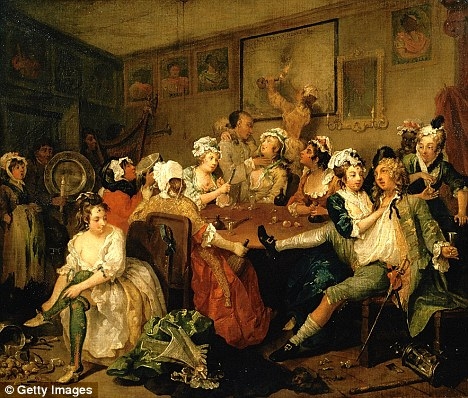
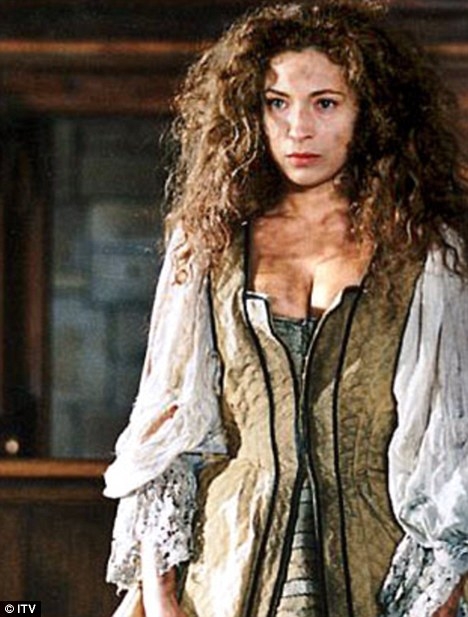
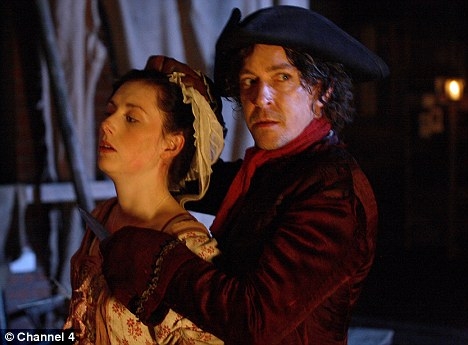
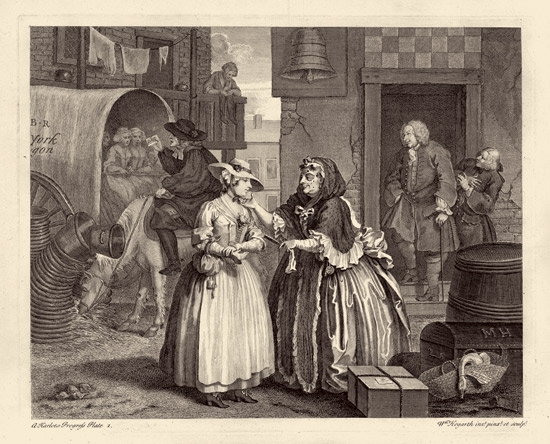
Cast from City of Vice, a historical drama set in a vice-ridden London
The Royal Joke, or Black Jacks Delight, by James Gillray (1757-1815)






